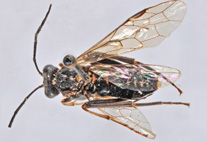Abstract
A recent molecular phylogeny of Cercomacra Sclater, 1858 found the genus to be polyphyletic (Tello et al. 2014). Two non-sister clades in putative Cercomacra were uncovered: Cercomacra sensu stricto, including Cercomacra manu Fitzpatrick & Willard, 1990, C. brasiliana Hellmayr, 1905, C. cinerascens (Sclater, 1857), C. melanaria (Ménétries, 1835), C. ferdinandi Snethlage, 1928, C. carbonaria Sclater & Salvin, 1873 and C. nigricans Sclater, 1858; and Cercomacroides Tello & Raposo, 2014, including Cercomacroides nigrescens (Cabanis & Heine, 1859), C. laeta (Todd, 1920), C. parkeri (Graves, 1997), C. tyrannina (Sclater, 1855) and C. serva (Sclater, 1858). This split required a prior re-examination of the apparently difficult facts surrounding the name of the type species of Cercomacra to ensure that the appropriate group would retain that name leaving the balance to the new genus-group name, Cercomacroides. The findings of that re-examination are nomenclatural rather than taxonomic and are complex enough to deserve a historical explanation, which is presented here. In summary, Hellmayr (1905) was correct in clarifying the identity of the type species chosen by Sclater (1890), but he did not suggest any nomenclatural action to fix the misidentified type species. Subsequent information provided by Cory & Hellmayr (1924) regarding the type specimen of Cercomacra brasiliana was incorrect, and the holotype is not in St. Petersburg as they implied.

